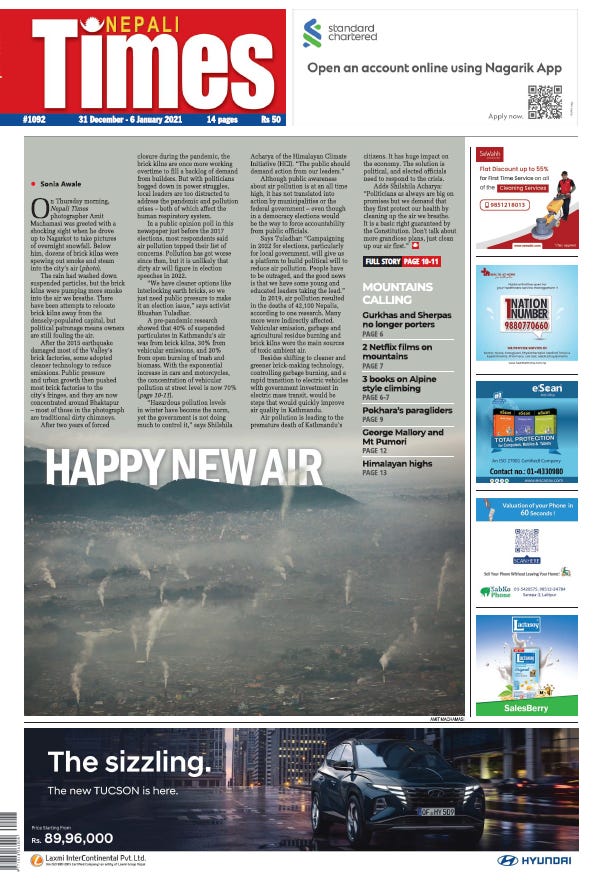Nepali Times ePaper
Dear Nepali Times Readers,
The first week of January is when Kathmandu Valley's air is at its worst. A pre-pandemic research showed that 40% of suspended particulates in Kathmandu’s air was from brick kilns, 30% from vehicular emissions, and 20% from open burning of trash and biomass. With the exponential increase in cars and motorcycles, the concentration of vehicular pollution at street level is now 70%. After two years of forced closure, the brick kilns are also back in operation.
Air pollution is not only leading to premature death but also has a huge impact on the economy. The solution is political and with the elections coming up, there must be public pressure to address this health hazard. Read Sonia Awale's extended reportage on Page 1 and 10-11 of this week's issue, ‘Happy New Air’.
Highlights from this week Mountain Special issue:
1921 Rendezvous: Mallory, Pumori and Everest:
Kanak Mani Dixit delves into how Pumori peak came to be named a century ago, as well as George Mallory’s climbing, early history of mountaineering and Everest.
"Gurkhas and Sherpas are no longer just support staff"
In his latest Nepal visit, legendary climber Reinhold Messner takes a look back at his mountaineering journey and talks about the climate crisis, and his support for Nims Purja.
Kunda Dixit reviews three books about triumph and tragedy among the world's highest mountains: Voytek Kurtyka's Art of Freedom, Elisabeth Revol's To Live, and Nirmal Purja's Beyond Possible.
I review two recent films on mountains, 14 Peaks: Nothing is Impossible and The Summit of the Gods, available on Netflix.
This week on Backside column, the Ass has some tips to maintain good health in the coming year.
Write to us with your comments and suggestions at nepalitimes.nt@gmail.com.
Happy New Year!
Stay Safe.
Sahina Shrestha
Nepali Times



